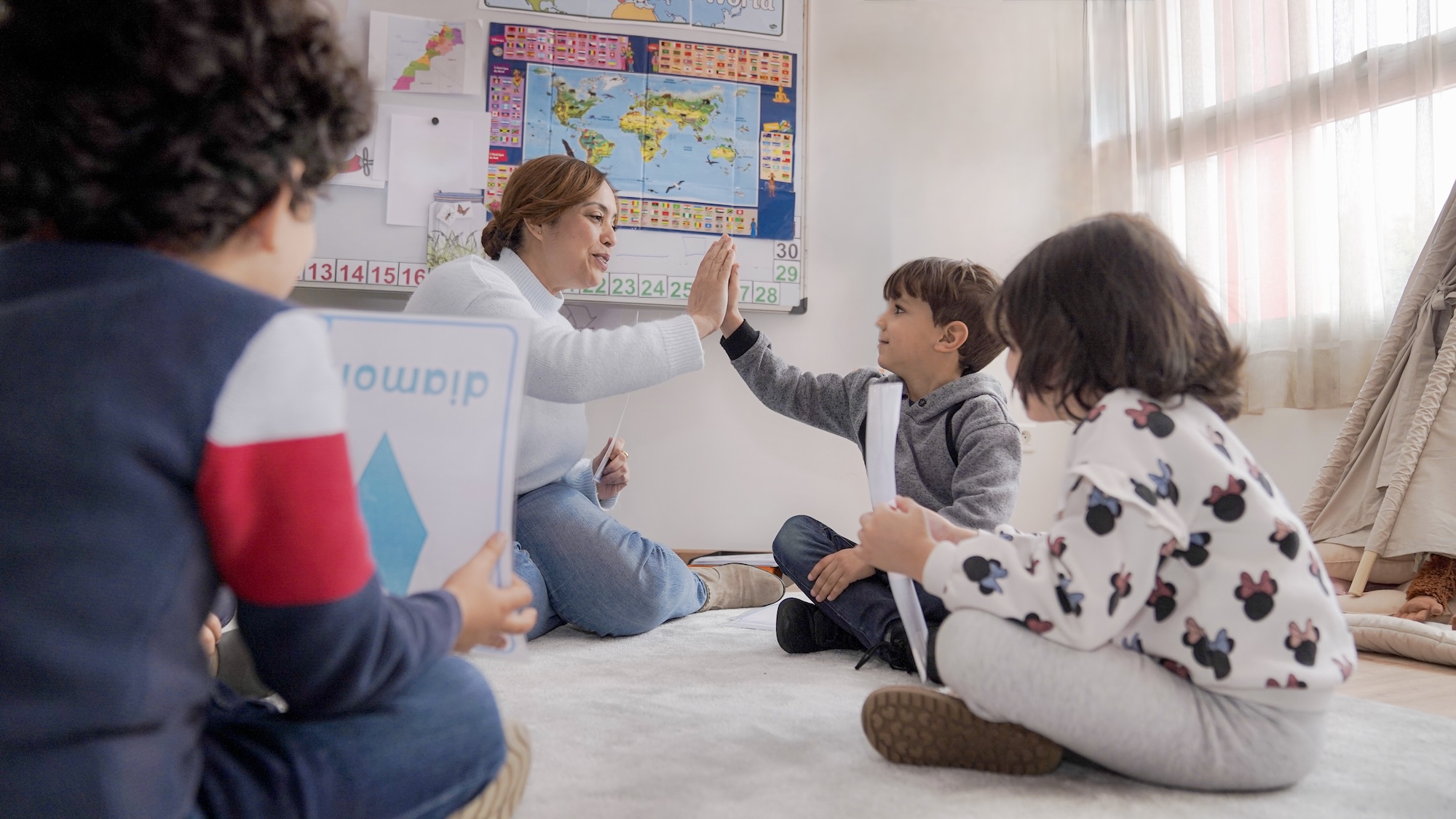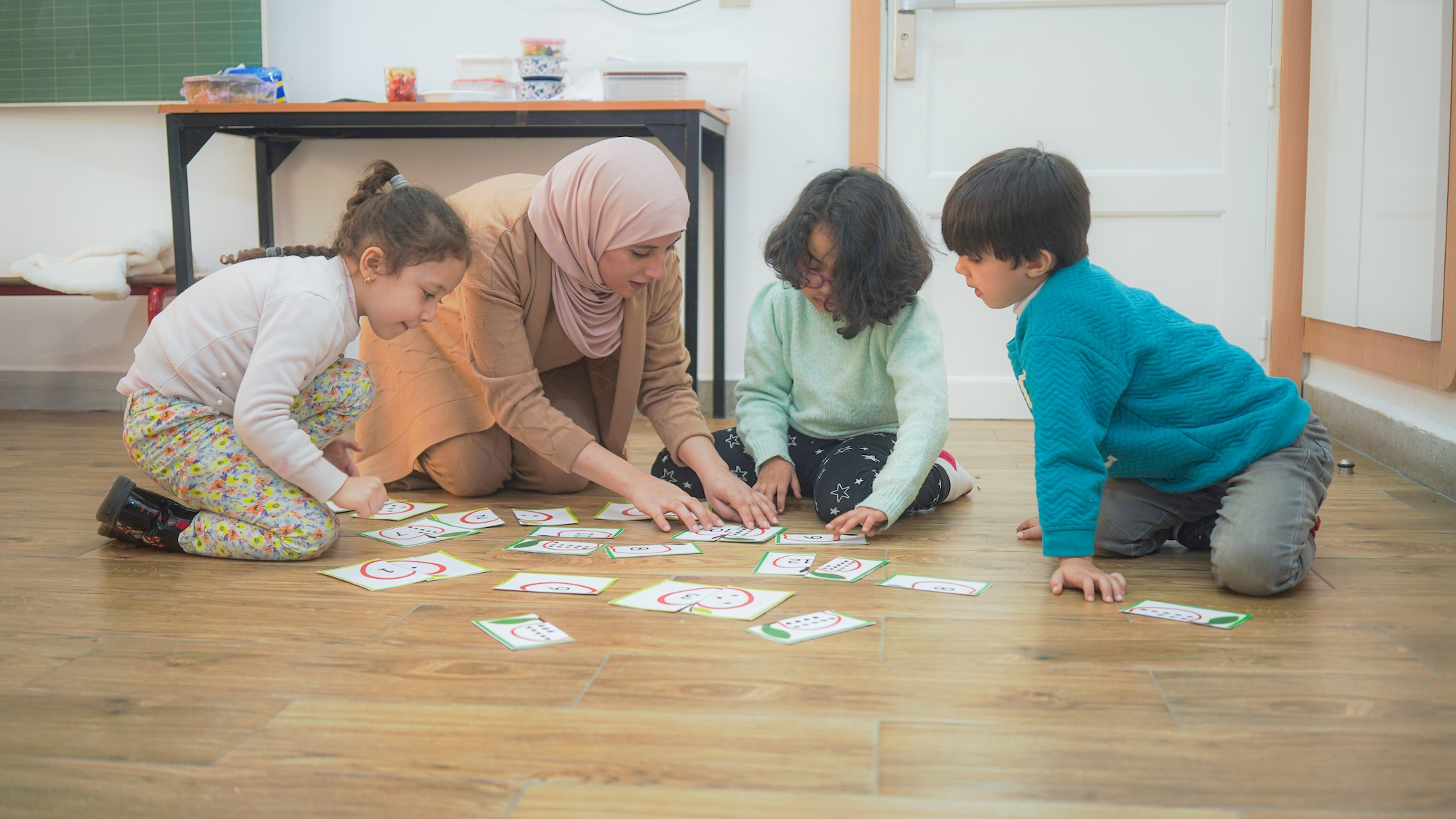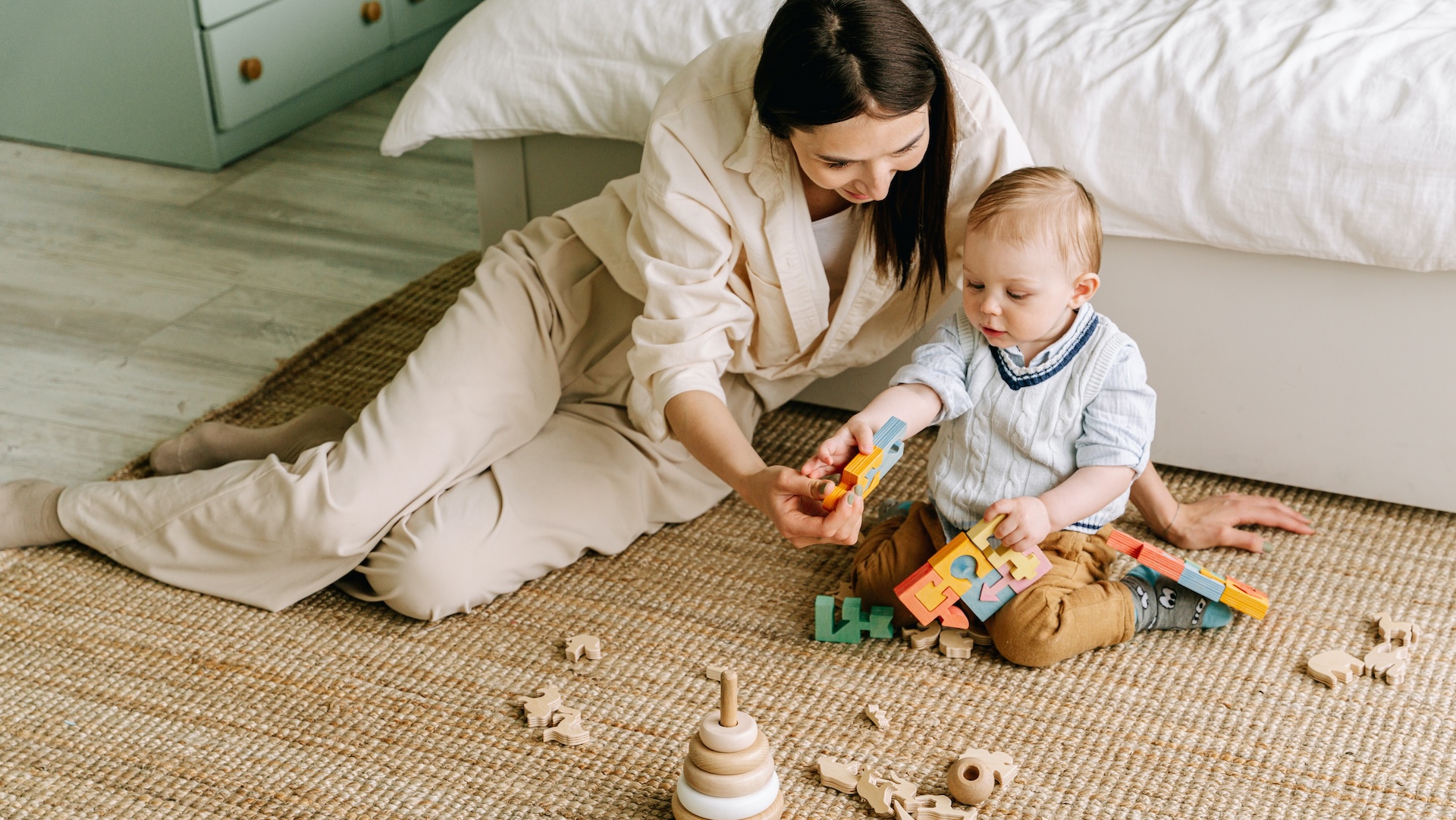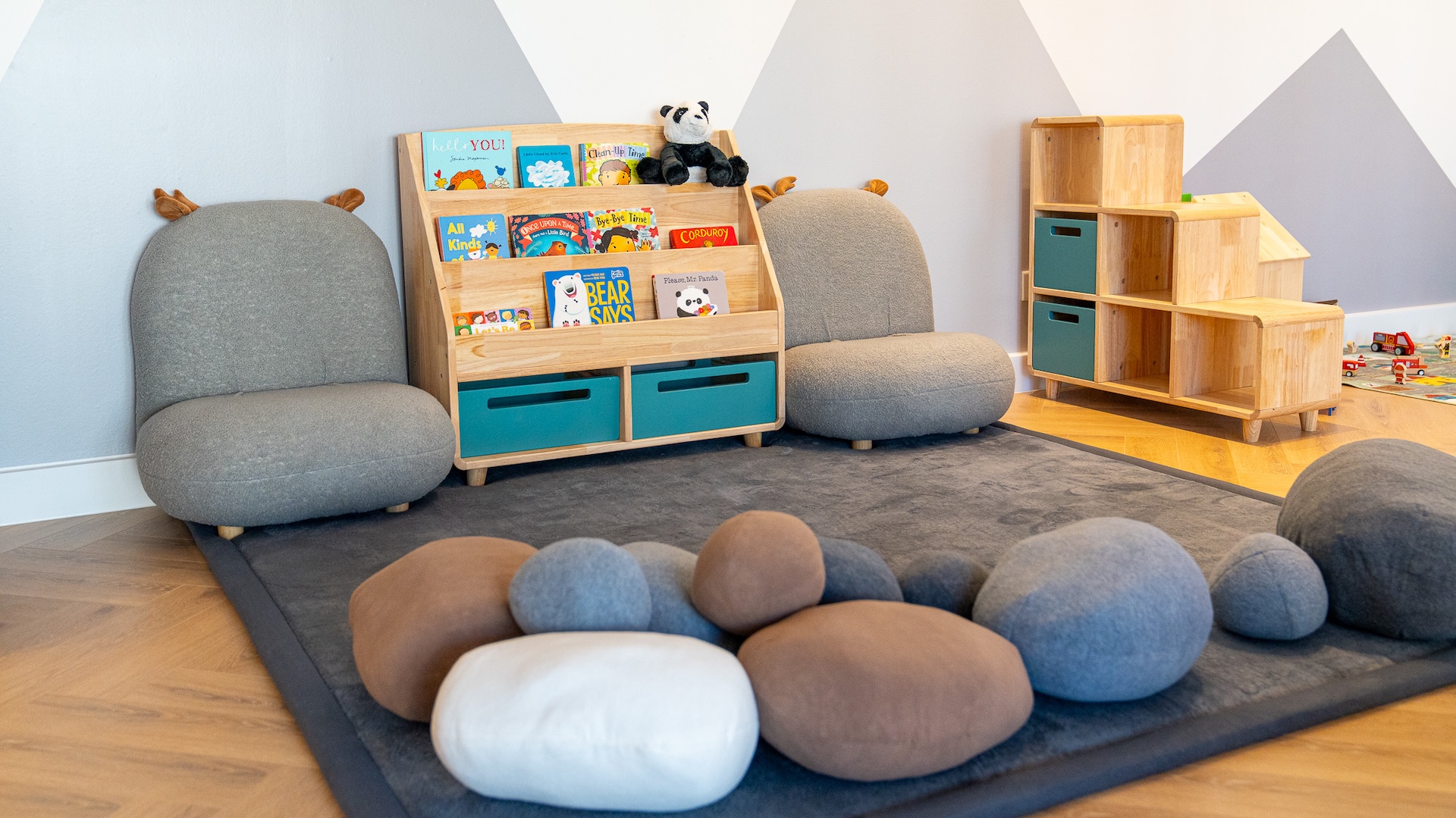Dr. Jonna Kangas, PhD & Adjunct professor of early childhood education department
Academic leader of 1000+ blended teacher training initiatives, Faculty of Education Sciences, University of Helsinki
Mathematics is often seen as a subject of rules, numbers, and structure. However, when we think about introducing math to young children, especially those aged 0-5, it’s essential to consider how they naturally learn. Playful, active engagement with early math concepts is developmentally appropriate and crucial for fostering a lifelong love of learning. Combining fun and discovery, this approach makes math accessible and enjoyable for young learners.
Play and learning go hand in hand
Children are natural learners, constantly exploring and making sense of the world around them. For young children, learning happens best when they are engaged in play—an activity that is self-directed, enjoyable, and deeply connected to their curiosity. Play is a powerful tool for learning, especially in early mathematics. The concept of “playing for learning,” as explained by Kangas et al. (2019), emphasises how play naturally aligns with young children’s exploration of the world. Through playful activities, educators can support the development of mathematical skills by creating environments that encourage curiosity and engagement. For instance, offering open-ended play with materials like blocks or counting objects helps children build early numeracy skills, such as recognising numbers, comparing quantities, and exploring patterns. Research shows that incorporating math into everyday playful activities strengthens their mathematical agency and language skills (Luomaniemi et al., 2023). When mathematical concepts are embedded in culturally meaningful experiences, children are more likely to engage deeply with those concepts, making them part of their understanding of the world.
Active play is a cornerstone of this process because young children are sensory learners. They grasp concepts like shape, size, and quantity through touch, movement, and hands-on interaction with their surroundings. As Aunio (2023) notes, young children naturally develop mathematical relational skills through activities like comparing quantities, classifying objects, and understanding one-to-one correspondence that are part of FinlandWay lesson plans every day. By engaging in such activities through play, children build a solid foundation for formal mathematical skills like counting, sequencing, and even simple addition and subtraction.

Why playful math matters?
When math is introduced playfully and actively, it helps children develop not only cognitive skills but also social and emotional competencies. Playing together with peers during math activities fosters collaboration, communication, and problem-solving, all of which are key components of early childhood development. For instance, when children work together to build a tower or complete a puzzle, they often engage in actions and discussions about quantity, spatial awareness, and sequencing without even realising they’re doing math. This ties into Luomaniemi et al.’s (2023) idea of “enabling math talk,” where children participate in dialogue that promotes mathematical thinking, even if they aren’t formally learning math.
Incorporating playful math activities allows children to engage in self-directed learning, where they experiment, problem-solve, and collaborate with peers. As Kangas & Harju-Luukkainen (2019) highlight, when math is integrated into playful learning, children experience both joy and challenge, enhancing their engagement and understanding. Play not only supports cognitive growth but also helps children develop autonomy and a positive relationship with learning.
Moreover, playful math learning nurtures a positive attitude toward the subject from an early age. Math anxiety is a well-documented issue, even in young children, and much of it stems from rigid, stressful learning environments where failure is feared. However, when math is presented as a fun challenge, something to explore and experiment with, children are more willing to take risks, make mistakes, and learn from them. This attitude — approaching learning with curiosity and persistence — can influence their academic journey long into the future. As Hannula-Sormunen (2019) highlights, mathematical thinking is embedded in children’s everyday lives, whether they are aware of it or not. Adults often overlook these early mathematical skills, but recognising and fostering them through playful activities is a key step in promoting children’s understanding of math in a non-threatening way.
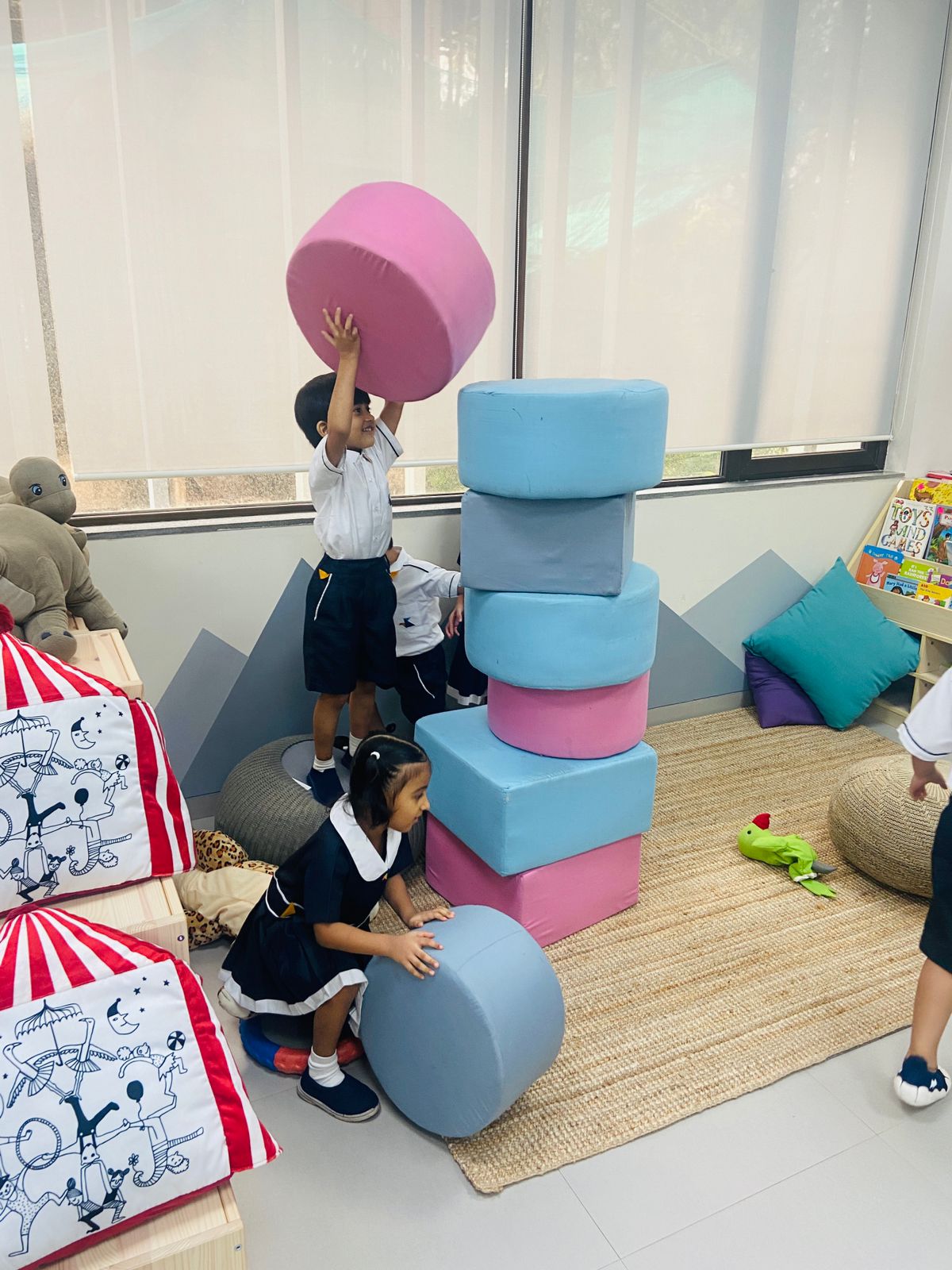
How to make math playful?
For very young children, math is deeply embedded in their sensory experiences. Babies, for example, are already laying the foundation for mathematical understanding when they engage in activities like reaching for objects or exploring their environment. Sensory play, such as filling and dumping containers or stacking cups, introduces them to early ideas of comparison, estimation, and quantity and these activities are used in FinlandWay, hand-in-hand with proper mathematical tools. Hannula-Sormunen (2019) emphasises that mathematical concepts such as small quantities and numerical observations are part of children’s everyday understanding, even if they seem self-evident to adults.
Incorporating math into everyday activities is easier than it might seem, and it can be done without setting aside specific “math time.” For parents and teachers, everyday routines offer rich opportunities to embed math in playful, hands-on ways:
- Counting and sorting: During mealtime, children can count how many carrots are on their plates or sort their toys by colour, size, or type. This builds early number sense and classification skills, both of which are foundational to mathematical learning (Aunio, 2023).
- Pattern play and block play: Whether it’s arranging objects in a pattern, building towers, or noticing patterns in nature (like the stripes on a zebra or leaves on a tree), encouraging children to observe and create patterns builds foundational math skills (Vartiainen et al. 2023).
- Measurement through exploration: Use simple measuring tools like cups, rulers, or even hands to measure items in their environment. This helps children understand concepts like length, height, and volume, but don’t necessarily need standardised measures yet (Vartiainen et al. 2023).
- Spatial awareness with puzzles and blocks: Activities like stacking blocks or fitting puzzle pieces together help children develop spatial reasoning skills, which are critical for later understanding geometry (Luomaniemi et al., 2023).
- Math through movement: Singing songs with counting elements or playing games that involve movement and numbers—like hopping a certain number of times—helps integrate physical activity with math concepts, making learning more dynamic and engaging (Aunio, 2023).
The role of teachers and parents
Parents and educators play a pivotal role in supporting playful math learning. By recognising that math is all around us, they can encourage children to notice and engage with mathematical concepts in their everyday lives. This doesn’t require complex tools or formal instruction—rather, it’s about being aware of opportunities to integrate math into natural interactions.
In early childhood settings, teachers can create rich environments where mathematical thinking is encouraged through play. For instance, in FinlandWay schools teachers set up a “math-rich” play area with materials like counting beads, shape sorters, different sizes of blocks and cardboard boxes, or measuring cups offer children opportunities to explore mathematical concepts on their terms and use gross and fine-motor skills. Moreover, asking open-ended questions—such as “How many blocks do you think we need to make the tower as tall as you?”—invites children to think critically and reflect on their problem-solving strategies. This aligns with Luomaniemi et al.’s (2023) suggestion of fostering versatile ways to participate in math talk, which encourages children to engage with mathematical ideas in multiple ways and contexts.
Parents, too, can support this learning at home. Rather than seeing math as something that only happens at school, parents can embrace the idea that every moment is a learning opportunity. Engaging in simple, playful math activities at home—whether counting steps, comparing objects, or playing number games—helps children develop comfort and familiarity with mathematical ideas from an early age. By making math a regular part of everyday life, parents can help children see it as a normal and enjoyable part of their world.
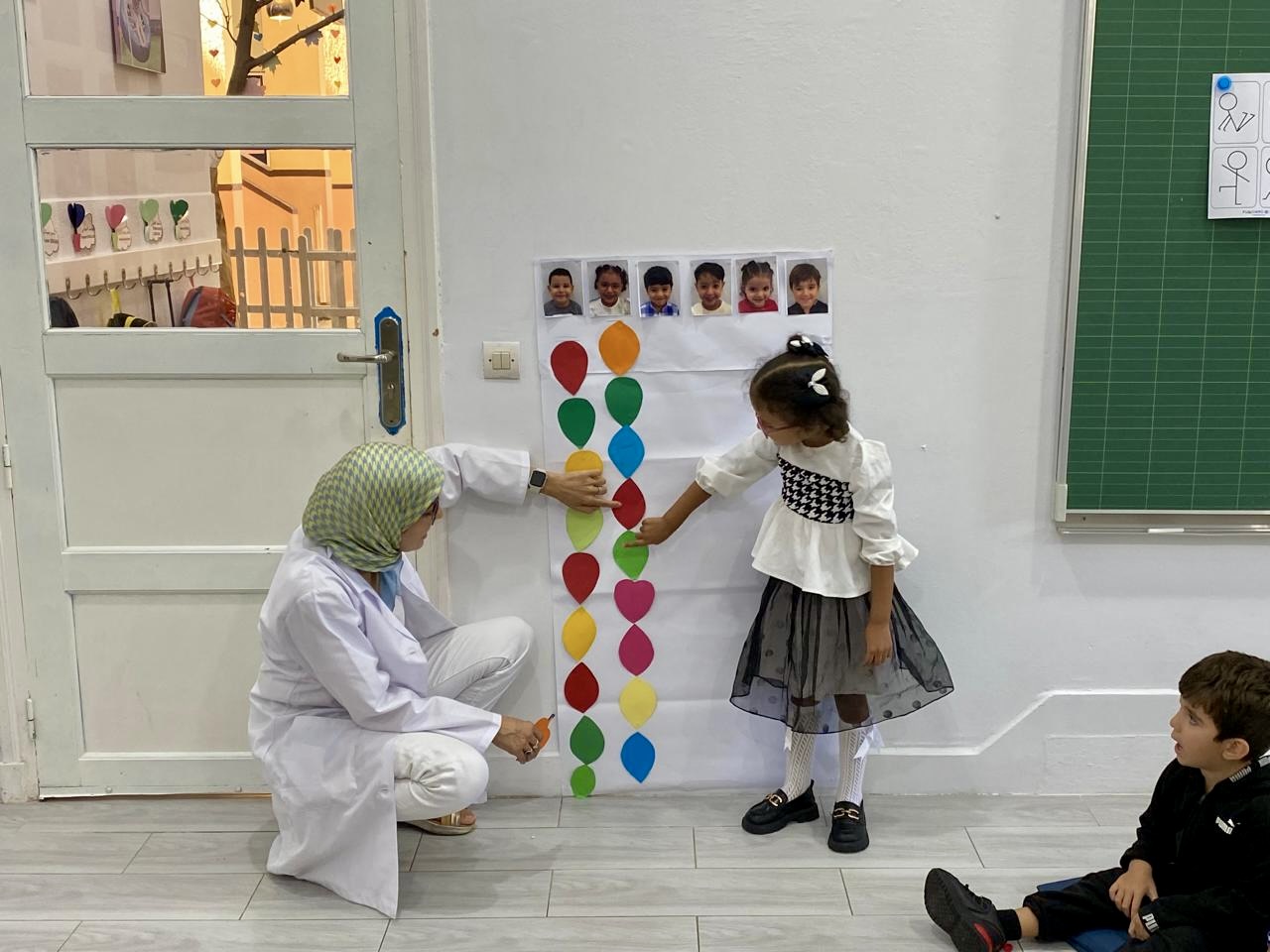
Building confidence and a love of learning
When children feel empowered to explore, question, and discover through play, they are building more than just math skills—they are developing a love of learning that will serve them well for years to come. Ultimately, the goal of making math playful and active is to help young children see themselves as capable learners. By integrating math into play, we allow them to approach the subject with a sense of wonder and excitement, rather than anxiety or frustration. This foundation of confidence and enjoyment is critical not only for later success in mathematics but for their broader academic and life experiences.
References
Aunio, P. (2023). Liikkumisen ja matemaattisten taitojen kehityksen monimutkainen suhde – Pienten lasten oppiminen ja liikkuminen.Tutkittua varhaiskasvatuksesta -blog (Research about ECE), https://researchaboutece.wordpress.com/
Hannula-Sormunen, M. (2019). Millaista on varhaiskasvatuksen matematiikka eli “pikkumatikka” ja miksi sitä tarvitaan. Tutkittua varhaiskasvatuksesta -blog (Research about ECE), https://researchaboutece.wordpress.com/
Kangas, J., Ukkonen-Mikkola, T. & Harju-Luukkainen, H. (forthcoming). Contextualizing playful learning practices in the Finnish Early Childhood Education and Care. In: Boyd, W. & Garvis, S. (eds). Early Childhood Pedagogical Practices across the World: Selected Case Studies on the Role of Teachers for Learning and Care.
Kangas, J., & Harju-Luukkainen, H. (2022). Creating a Theoretical Framework for Playful Learning and Pedagogy–The Finnish Perspective. In Harju-Luukkainen H., Kangas, J. & Garvis, S. (eds.) Finnish early childhood education and care: A multi-theoretical perspective on research and practice (pp. 195-208). Springer International Publishing.
Luomaniemi, K., Kankaanpää, S., & Hannula-Sormunen, M. (2023). Suosituksia monikielisten lasten varhaisten matemaattisten taitojen tukemiseen–Temaattinen synteesi. Journal of Early Childhood Education Research, 12(3), 23-63.
